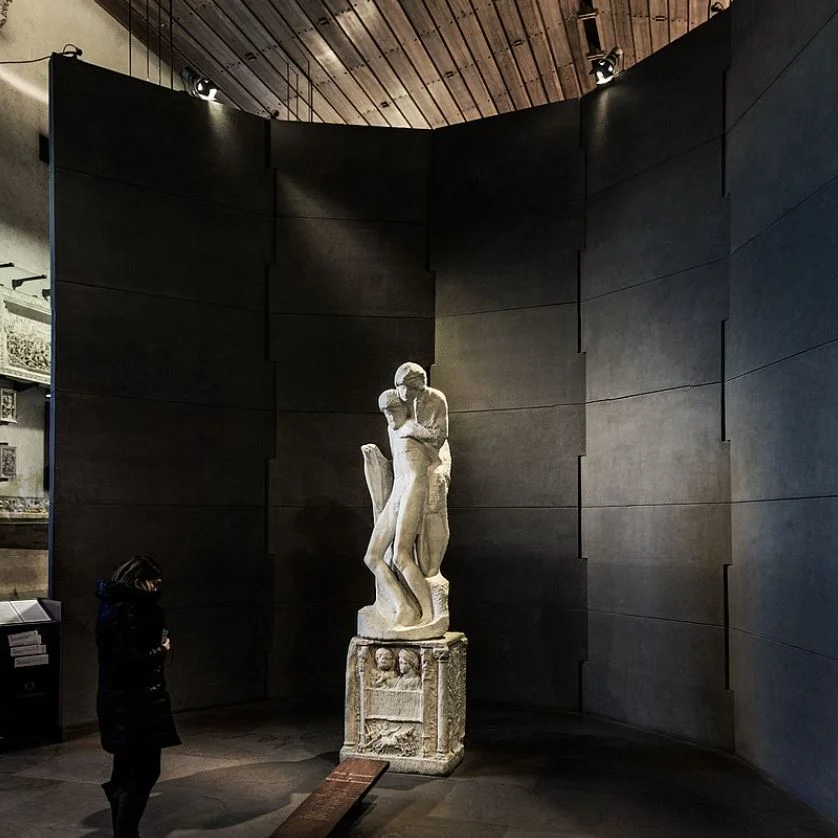If your job is your hobby, then you won’t have to work a day in your life. This saying is especially true for artists who simply create amazing things for the rest of us to enjoy.
One of these artists was named Michelangelo di Lodovico Buonarroti Simoni (1475-1564), better known as simply “Michelangelo.” He was an extremely versatile polymath who excelled as a sculptor, painter, architect, and poet, and eventually became one of the most renowned artists of the Renaissance.
In this article, we’ll take a closer look at some of the most interesting facts about the Rondanini Pietà by Michelangelo, the final work in the oeuvre of this amazingly talented individual.
1. Michelangelo worked on it until the final days of his life
The Rondanini Pietà is one of the most intriguing works of art created by Michelangelo. Not because of its fabulous quality such as his Statue of David or his paintings in the Sistine Chapel, for example, but because it was the final sculpture he worked on.
He started working on this sculpture in the year 1552 and continued chiseling away at it until 6 days before he passed away. Remarkably, he was already 88 years of age at the time he died in the year 1564!
That’s what you call dedication to your job, but as you’ll soon discover, there was more to it than just a man who was enjoying his line of work.

2. He already completed a famous Pieta sculpture 65 years earlier
This sculpture represents a Pietà and depicts the Virgin Mary who mourns over the dead body of her son Jesus Christ following his crucifixion. This was the final of a number of sculptures created by the artist with the same theme.
One of the most remarkable facts about the Rondanini Pietà is that the first Pietà he created is also the most famous one and was completed 6 and a half decades earlier. This is located in the most amazing church in the world, St. Peter’s Basilica in Rome, a church that Michelangelo actually partially designed as well.
This magnificent sculpture was completed between 1498 and 1499, which means that it was completed 65 years before he put the final touches on the Rondanini version of his series of Pietà sculptures.
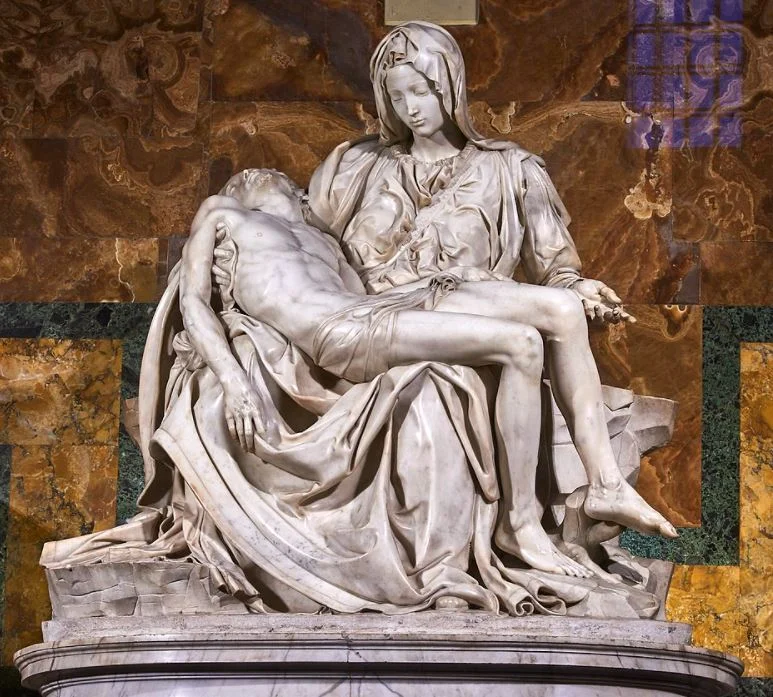
3. The statue stands nearly 2 meters tall

The figures depicted in this work seem to be elongated and this was most probably done on purpose by Michelangelo to make them look frail and weak. This is seen as a sign that the aged man was contemplating his own mortality and spirituality.
The statue is huge and stands nearly 2 meters tall as it has a height of 195 centimeters (77 inches).
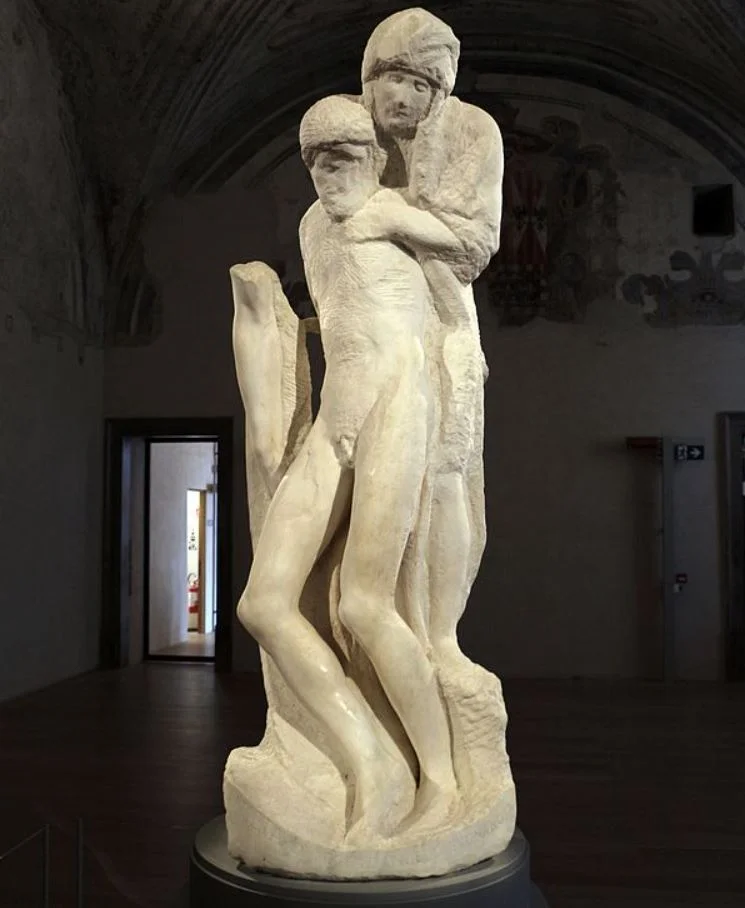
4. Michelangelo dismembered the right arm of Christ
It has been reported that Michelangelo chiseled the entire day on this remarkable sculpture just 6 days before he passed away. On this day he dismembered the right arm of Jesus Christ.
This was no accident as it appears that the artist changed his mind as work on this work proceeded, again in relation to the thought of his own demise approaching.
The right arm of Jesus Christ is the only element of the sculpture that survived in the manner that it was originally conceived.

5. He already mutilated one of his earlier works as well
Michelangelo started working on the Rondanini Pietà in the year 1552, which was 3 years before he stopped working on “The Deposition.” He originally intended this sculpture to decorate his own tomb at the Santa Maria Maggiore in Rome.
He worked on this sculpture for 8 years before cutting off the left arm of Jesus Christ for unknown reasons. This also means that it wasn’t used for his tomb and it’s now located in the Museo dell’Opera del Duomo in Florence. Therefore, it’s sometimes referred to as the “Florentine Pietà.”
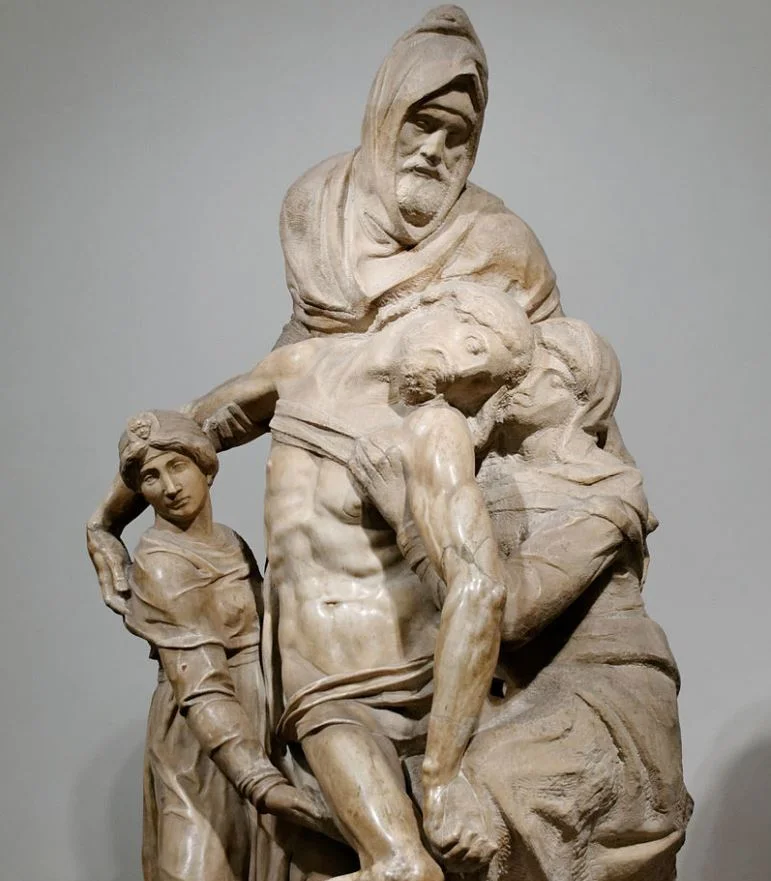
6. It appears that the artist moved away from the Renaissance ideals
Another remarkable fact about the Rondanini Pietà is that it ended up far from the idealistic representations of the Renaissance. The elongated bodies and faces of both Jesus and Mary are presumed to be examples of the style used by Mannerist artists at the time.
Mannerism is defined by an exaggeration of the ideal proportions and beauty used in the works of Renaissance artists such as Leonardo da Vinci and Raphael.
This remarkable move has also been described as a move away from the human ideal in search of the spiritual realm.
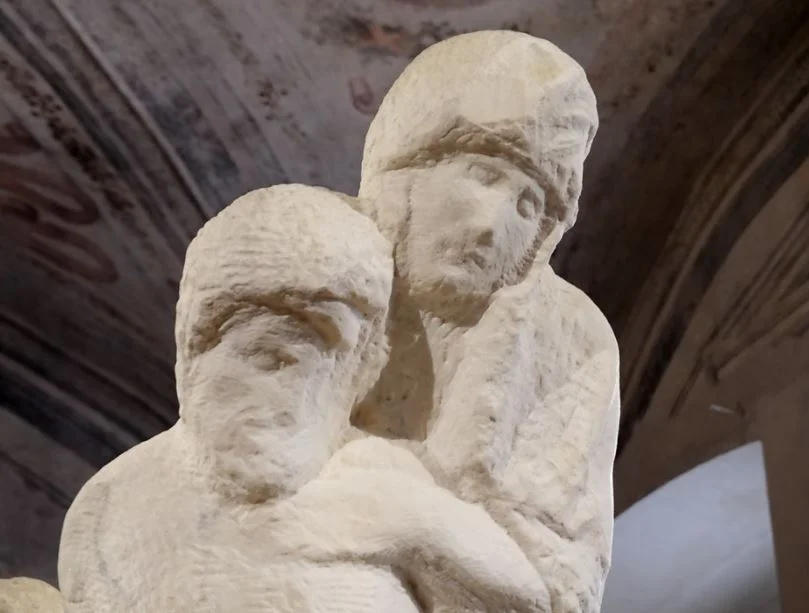
7. It was named after the location it stood for multiple centuries
Because of the fact that this sculpture was considered an unfinished work of low quality, it had a rather obscure history of ownership until it was placed in the Baroque Palazzo Rondanini in Rome.
This palace was completed in the year 1764 and is located on the “Via del Corso,” an important street in the historical center of the city. The sculpture stayed in the courtyard of this palace for nearly 2 centuries.
This remarkable palace is also the reason why the sculpture is named the way it is today.
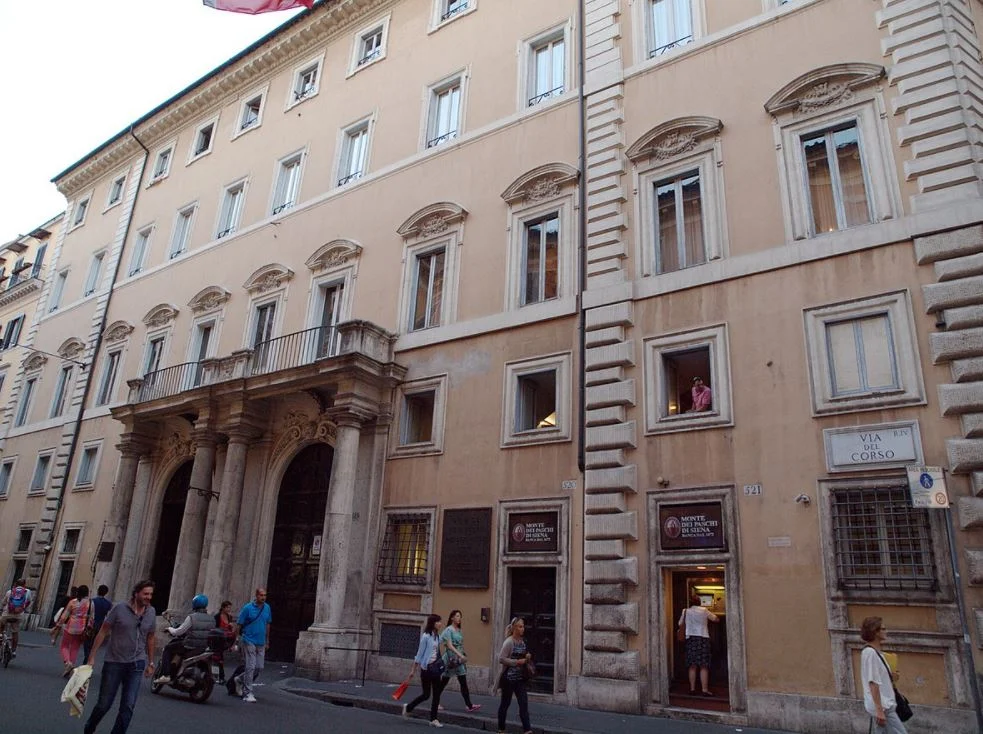
8. The sculpture has its own museum in a famous landmark in Milan
After decorating this palace in central Rome for nearly 2 centuries, the sculpture ended up being acquired by the city of Milan in the 1950s. Following this move, it was placed in a small museum of the Castello Sforzesco, a magnificent fortification and one of the most famous attractions in the city.
This museum is one of many housed in the immense castle and was fittingly named as the “Museum of the Rondanini Pietà,” specially dedicated to this remarkable work of art by one of the greatest artists in history!
